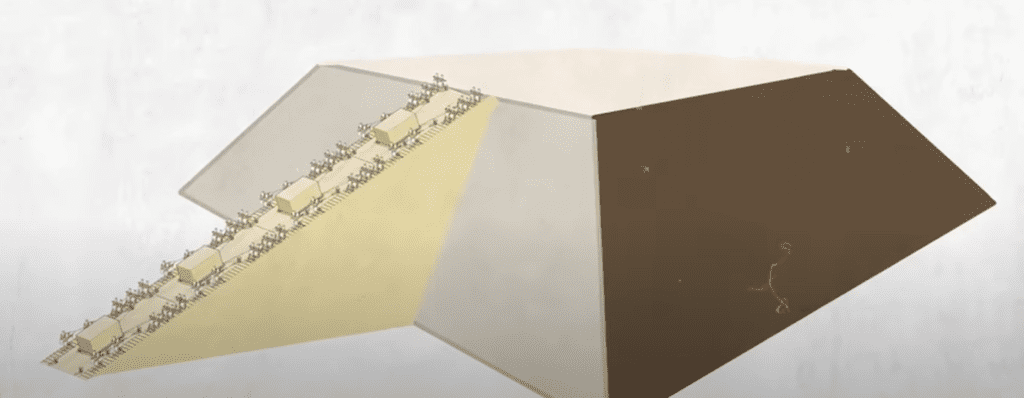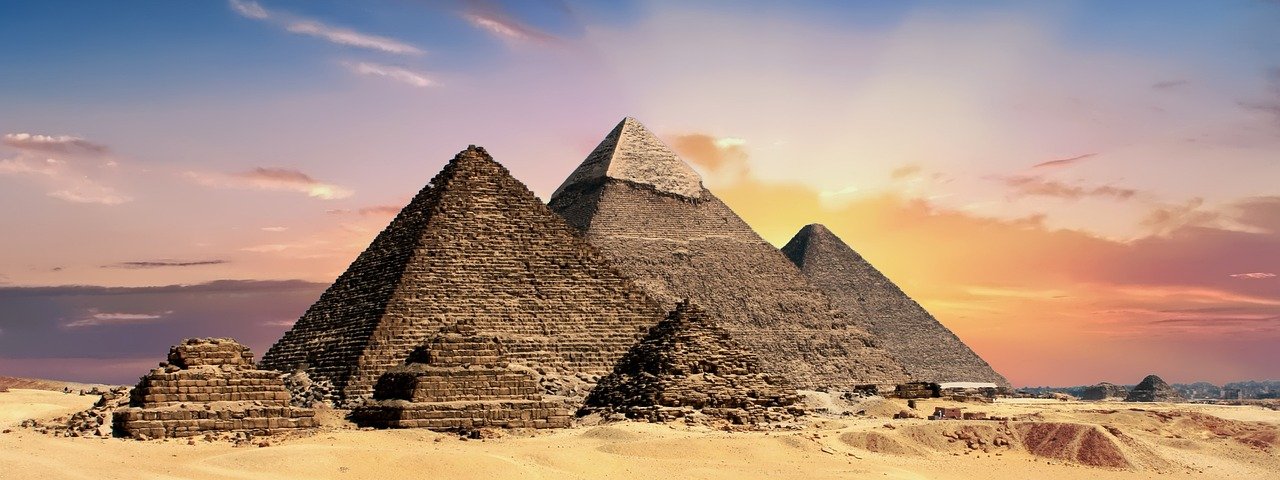Introduction
The Great Pyramid of Giza was built in Egypt about 4,500 years ago. It continues to amaze people even today. Standing at a height of 147 meters, it held the title of the tallest structure in the world for over 4,000 years. Weighing an estimated 6 million tonnes, it far surpasses the weight of modern structures like the Burj Khalifa, which weighs a mere 500,000 tonnes. The question that has left people dumbstruck for centuries is: how was it built? Back then, people didn’t have cranes, bulldozers, or modern technology. They didn’t even have wheels. Yet, they built a monument that still stands strong today. Can you imagine a structure standing for over 4,500 years, enduring hot summers, storms, torrential rains, and weathering? There’s no other surviving structure as old and as big as this. How was this made possible? Let’s delve into the mystery of the pyramids in this article.
Table of Contents
The Great Pyramid of Giza

A marvel of ancient engineering, the Great Pyramid of Giza (Pyramid of Khufu) dominates the Giza plateau. Built around 2560 BC during the Fourth Dynasty of the Old Kingdom of Egypt, it was a monumental project. The pyramid is located on the west bank of the River Nile and is accompanied by two other pyramids, the Pyramid of Khafre and the Pyramid of Menkaure, forming the Giza pyramid complex. These structures are the last surviving wonders of the ancient world.
Pharaoh Khufu and the Old Kingdom
Pharaoh Khufu, the second monarch of the Fourth Dynasty, is credited with the construction of the Great Pyramid. Despite the lack of detailed historical records about Khufu, it is believed that his reign lasted between 23 to 34 years. The Old Kingdom of Egypt, often referred to as the “Age of the Pyramids,” saw the construction of many monumental structures, with the Great Pyramid being the most iconic.
The Pyramids of Giza Complex
The Giza pyramid complex is not just home to the Great Pyramid. It includes the slightly smaller Pyramid of Khafre, built by Khufu’s son, and the much smaller Pyramid of Menkaure, built by Khafre’s son. The complex also features the Great Sphinx, several smaller pyramids, and numerous burial tombs. While many of these structures have suffered from weathering over the millennia, the three main pyramids remain remarkably well-preserved.
Purpose of the Pyramids
Why were these pyramids built? The Egyptian pyramids were originally built as elaborate tombs for the pharaohs. The ancient Egyptians believed in an afterlife where the soul would be judged by the gods. To prepare for this journey, the pharaohs commissioned grand tombs filled with food, treasures, jewelry, furniture, and clothes to be used in the afterlife. Their bodies were mummified and placed in sarcophaguses within the pyramids.
Evidence of Tomb Usage
Archaeologists have discovered scripts and texts on other pyramids and sarcophaguses that provide insight into the customs and beliefs of ancient Egyptians. Although no substantial evidence was found within the Great Pyramid of Giza itself, the discovery of an empty sarcophagus suggests that it was intended as Khufu’s final resting place. The treasures that once surrounded it were likely looted long before archaeologists arrived.
Alternative Theories
The mystery surrounding the Great Pyramid has given rise to several alternative theories. One popular theory suggests that the pyramid was a power plant capable of generating electricity. Proponents of this theory point to ancient artwork that they claim depicts light bulbs. However, This claim lacks concrete evidence. Another theory, proposed by American politician Ben Carson in 1998, claims that the pyramids were granaries built by Jesus Christ’s father. This theory is widely dismissed by historians.
Construction Theories
A common misconception is that the pyramids were built using slave labor. This idea was popularized by the Greek historian Herodotus and has been depicted in various films. However, modern research shows that the pyramids were built by skilled laborers who were well-fed and cared for. These workers lived in nearby communities and were supported by various sectors of society, including farmers who helped with construction during their off-seasons.
Materials and Resources


The construction of the pyramids required massive amounts of materials. Around 5.5 million tonnes of limestone, 8,000 tonnes of granite, and 500,000 tonnes of mortar were used. Most of these materials were sourced locally, while some were transported from Southern Egypt, approximately 800 kilometers away. The tools used were primarily made of copper, as it was the most common metal at the time.
Methods of Construction

How were these enormous stones moved without the use of wheels? One plausible theory suggests that the stones were transported via rafts on the River Nile. Once at the construction site, the stones were moved using sledges over wet sand. This method, discovered in a 2014 study, involved pouring water on the sand to reduce friction, making it easier to pull heavy objects.
Stacking the Stones

Stacking the stones to build the pyramid was another significant challenge. One theory proposes the use of a straight slope or ramp to move the stones up the pyramid. Wooden pillars and ropes would have been used to pull the stones up the slope. Another theory suggests the use of levers to lift and place the stones. Both methods seem plausible, but neither fully explains the construction process.
Precision and Design

The design of the pyramids is incredibly precise, with their sides aligned almost perfectly with the cardinal directions. How did the ancient Egyptians achieve such accuracy without modern technology? One theory suggests they used the Autumn Equinox, when day and night are equal, to align their construction. Another theory posits that they used the stars, specifically the Orion constellation, to guide their alignment. However, this theory is considered fringe and not widely accepted by mainstream historians.

Modern Discoveries and Studies
Recent archaeological discoveries and scientific studies have provided new insights into the construction methods of the pyramids. In 2015, archaeologists uncovered a 4,500-year-old wooden ramp that may have been used to move stones. Additionally, physicist Joseph West’s 2014 theory on using ropes and pillars to pull stones up a slope adds to our understanding of the construction process.
Enduring Mysteries
Despite these discoveries, many questions remain unanswered. For instance, how did the ancient Egyptians build such a massive structure within 20 years? If 20,000 workers were involved, a stone would need to be placed every three minutes. Which is technically impossible. Additionally, while we understand the chemistry of the mortar used in the pyramids, scientists have not been able to recreate it.
Conclusion
The Great Pyramid of Giza is a testament to the ingenuity and skill of ancient Egyptian builders. While we have gained a significant understanding of how it was constructed, many mysteries remain. As we continue to study and learn, future generations of archaeologists and historians may uncover the complete story behind this magnificent structure.
FAQs
- How old is the Great Pyramid of Giza?
- The Great Pyramid of Giza is approximately 4,500 years old, built around 2560 BC.
- Were the pyramids built by slaves?
- No, modern research shows that the pyramids were built by skilled laborers who were well-fed and cared for.
- What materials were used to build the pyramids?
- The pyramids were constructed using limestone, granite, and mortar.
- How were the stones transported?
- The stones were likely transported via rafts on the River Nile and moved using sledges over wet sand.
- Why were the pyramids built?
- The primary purpose of the pyramids was to serve as tombs for the pharaohs and to prepare them for the afterlife.



